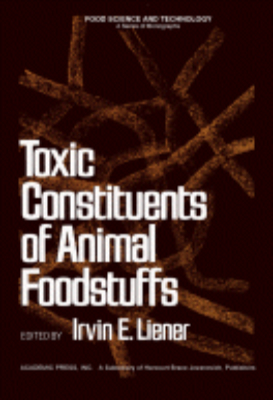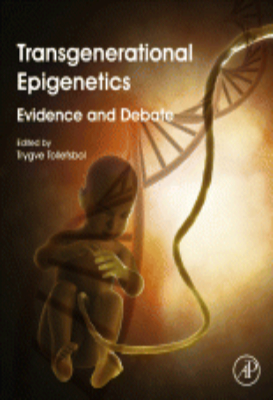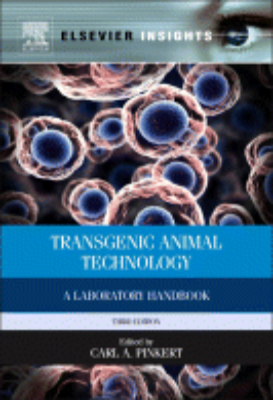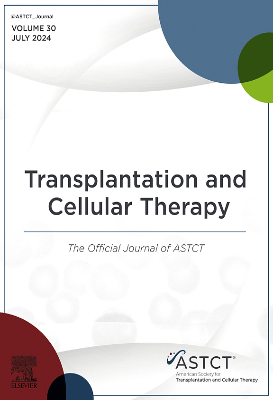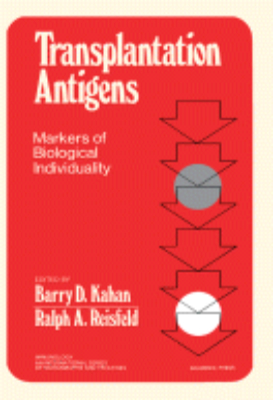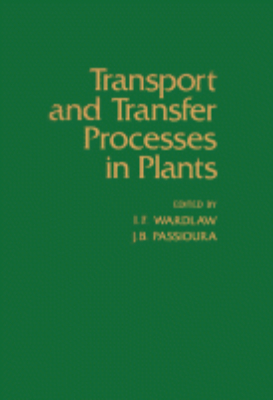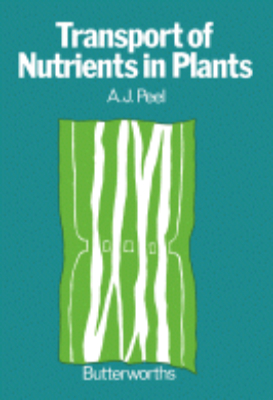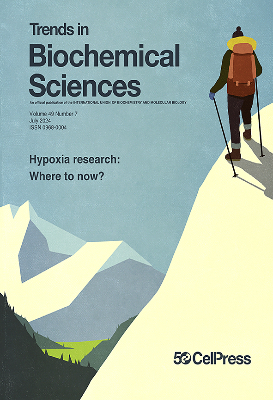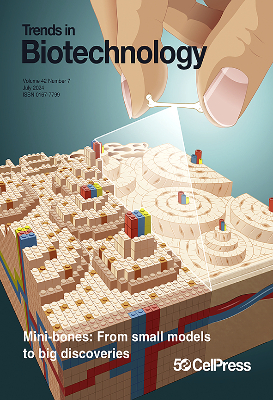E-Resources
Tomato Diseases
"Following the successful first edition, this revised edition, contains 680 pages and 900 color photos and diagrams, covering every imaginable symptom, pest and disease affecting the tomato. This is the definitive work on the diseases and disorders of the tomato, a worldwide crop of significant economic importance. Key Features. Includes over 300 high quality colour photographs. Explains how to examine and identify diseases of the foliage, roots, neck, stalk and fruit. Enables readers to diagnose and combat both parasitic and non-parasitic diseases of the tomato plant and fruit"
Toxic Constituents of Animal Foodstuffs
Toxic Constituents of Animal Foodstuffs focuses on toxic substances that occur naturally as well as those that are deliberately or inadvertently introduced by man in animal foodstuffs. This book gives specific discussions on food contaminants in meat, dairy products, avian and fish eggs, shellfish, fish, and algae. It notes that the naturally occurring toxicants seem to be confined mainly to avian and fish eggs and to certain kinds of shellfish and amphibia. Examples of toxicity due to the introduction of synthetic chemicals may be found in most meat and dairy products. Moreover, special consideration is given to the problem of the carcinogenic nitrosamines in meat products to which nitrites have been added. This reference will convey an increased awareness of the fact that even products of animal origin may prove to be potentially hazardous to health because of certain toxic substances. Consequently, there will be a vital need for their close surveillance in the food chain.
Toxic Constituents of Plant Foodstuffs
Toxic Constituents of Plant Foodstuffs focuses on toxic substances in foods of plant origin, including protease inhibitors, hemagglutinins, goitrogens, cyanogens, saponins, gossypol, lathyrogens, and allergens. The book also considers adventitious toxic factors in processed foods and miscellaneous toxic factors such as stimulants and depressants, hypoglycemic agents, toxic amino acids, metal-binding constituents, and hepatotoxins. This volume is organized into 13 chapters and begins with an overview of protease inhibitors, including their distribution in the plant kingdom, physical and chemical properties, and mechanism of interaction with proteases. The next chapters focus on the adventitious introduction of toxic factors into processed plant foods; the inactivation of the trypsin inhibitor and hemagglutinin found in legumes by cooking; and the extraction of a nontoxic, edible starch from cycads. The reader is also introduced to lathyrism, the toxicity of agglutinins, occurrence of goitrogens in thioglucoside-containing plants, and dietary sources of cyanogen. This book will be of interest and value to food scientists who are concerned with the safety of food supply and public health officials tasked with enforcing regulations necessary to ensure the safety of a particular food.
Toxic Substances in Crop Plants
"Continuing disquiet over the use of animal by-products in livestock nutrition has provided renewed impetus for the greater exploitation of conventional and novel crop plants both as food and as industrial raw materials. However, a major factor restricting the utilisation of such crops in animal nutrition is the presence of a diverse array of toxic substances capable of inducing effects ranging from loss of hair and wool to severe neurological disorders and even death. Significant advances have been made to establish the nature of these compounds and to assess their effects in animals and man. As in other branches of biomedical research, these developments have been achieved through the multidisciplinary efforts of chemists, biochemists, toxicologists, nutritionists and molecular geneticists. This volume reviews current knowledge of toxic substances in crop plants with particular reference to their anti-nutritional effects in animals and man and the potential for detoxification. The distribution and ecological significance of these compounds is also addressed. Key Features. Reviews current knowledge of toxic substances in crop plants. Assesses distribution and ecological significance of compounds"
Toxins in Plant Disease
Toxins in Plant Disease presents a comprehensive coverage of plant disease toxins, both those for which there are reasonable evidence and those with fewer credentials. This book is primarily concerned with the mechanism wherein substances that interfere with metabolism or that alter the normal structure of protoplasm are produced and released (category 1); this includes the traditional toxins, which are usually of low molecular weight. It also describes category 2 mechanism, wherein substances that interfere with normal control of growth and development are produced and released; these microorganisms are classified as growth-affecting compounds. Moreover, this text addresses some high-molecular-weight compounds that contribute to vascular dysfunction. It further talks about the production, isolation, assay, genetics of production, mechanism of action, structure-activity relationship, metabolism, and applications of these toxins. This publication will provide a rational basis for future investigations and contribute to the eventual understanding of the role that toxins play in disease causation.
Trace Elements in Human and Animal Nutrition: 1956
Trace Elements in Human and Animal Nutrition focuses on trace elements and their nutritional significance to humans and domestic animals. The trace elements covered include copper, molybdenum, iron, cobalt, nickel, zinc, manganese, iodine, fluorine, selenium, aluminum, arsenic, barium, strontium, boron, bromine, silicon, and vanadium. This book is organized into 13 chapters and begins with an overview of the trace element concept, the mode of action of trace elements, and the use of spectrochemical methods for the detection and estimation of t ace metals in biological materials. The next chapters explore in more detail the importance of trace elements in human and animal nutrition, touching on topics such as absorption and excretion in the body, deficiency, and toxicity. The book concludes by discussing the interrelationships between plants, man and his domestic animals, and the soil, with emphasis on the link between trace element deficiencies and health. An account of factors influencing the trace element contents of plants is also given. Finally, qualitative and quantitative differences in the trace element requirements of plants and animals are described. This book is intended for nutritionists and those who plan to specialize in nutrition.
Trace Elements in Human and Animal Nutrition: Fifth Edition 1986
The major change in the format of the fifth edition is the presentation of the book in two volumes, necessitated by the rapidly increasing knowledge of metabolism, interactions, and requirements of trace elements ... The guiding principle was to present the minimum of results that would serve as a logical foundation for the description of the present state of knowledge. Recent results of research were accommodated by devoting new chapters to the subjects "Methodology of Trace Element Research" and "Quality Assurance for Trace Element Analysis" and by expanding the discussion of lithium and aluminum in separate, new chapters. The first two subjects are of outstanding importance as determinants of future progress. The concern for the quality of analytical data motivated the authors of the individual chapters to review critically and, where necessary, revise analytical data presented in the previous editions. The rapid progress of trace analytical methodology since the mid-1970s has changed what had been accepted as normal for the concentrations of many trace elements in tissues and foods. The new data reflect the present state of the art in trace element analysis, but they may be subject to future revision.
Trace Elements in Human and Animal Nutrition: Fifth Edition 1987
The major change in the format of the fifth edition is the presentation of the book in two volumes, necessitated by the rapidly increasing knowledge of metabolism, interactions, and requirements of trace elements. The guiding principle was to present the minimum of results that would serve as a logical foundation for the description of the present state of knowledge.
Trace Elements in Human and Animal Nutrition: Fourth Edition 1977
Trace Elements in Human and Animal Nutrition, Fourth Edition, explores the physiological roles of trace elements in human and animal nutrition. It looks at the needs, tolerances, and interactions of trace elements with each other and with other nutrients and compounds, and it explores how deficient, toxic, or imbalanced intakes of such elements lead to biochemical and pathological changes. It also describes ways of diagnosing and addressing such aberrant intakes of trace elements, along with their principal sources. Organized into 20 chapters, this volume begins with an overview of the nature of trace elements and their mode of action, including iron, copper, molybdenum, cobalt, nickel, manganese, zinc, cadmium, chromium, iodine, selenium, fluorine, mercury, vanadium, silicon, lead, and arsenic. It then discusses the presence of these elements in animal tissues and fluids, along with their metabolism, functions, and toxicity. It also considers other elements, such as aluminum, antimony, barium, boron, bromine, germanium, lithium, rubidium, silver, strontium, tin, titanium, and zirconium. The book concludes with an analysis of the interrelationships among soil, plants, and animals. This book should be a valuable resource for students and chemists.
Trace Elements in Soil-plant-animal Systems
Trace Elements in SoilPlantAnimal Systems discusses the adverse effects or the essentiality of trace elements in soil, plants, and animals under field and laboratory conditions. The book explores the chemistry, biochemistry, and physics of the availability of trace elements to several organisms, as well as their functions in cell metabolism. Organized into six parts encompassing 24 chapters, the book starts with an overview of the chain of events whereby trace elements are released from different soil and rock sources. The trace elements are then taken up by living organisms, transferred to their sites of action, and function in different metabolic events. The text explores how the trace elements occur in various chemical compounds with varying solubilities. Other chapters explore the principles governing the distribution of elements in minerals and igneous rocks. The final chapter deals with trace element disorders in living organisms. The book is a valuable resource to physicists, chemists, biochemists, geochemists, mineralogists, agriculturists, pedologists, scientists, researchers, and students.
Trace Gas Emissions by Plants
Many trace gases are exchanged between the atmosphere and the biosphere. Although much research has been published on the photosynthetic exchanges of carbon dioxide, oxygen, and water vapor, this book focuses on the importance of biogenic trace gases on atmosphere chemistry and ecosystem stability. Included are methane and its effect on the radiative properties of the atmosphere, hydrocarbons (isoprene and monoterpenes), and their role in the production of ozone and carbon monoxide. Also covered are sulfur and nitrogen gases, both of which can lead to ecosystem acidification. The biochemistry and physiology of production of these and other gases are investigated.Plant physiologists, ecologists, and atmospheric chemists and modelers will benefit from this book.
Tracing Pathogens in the Food Chain
"Successful methods for the detection and investigation of outbreaks of foodborne disease are essential for ensuring consumer safety. Increased understanding of the transmission of pathogens in food chains will also assist efforts to safeguard public health. Tracing pathogens in the food chain reviews key aspects of the surveillance, analysis and spread of foodborne pathogens at different stages of industrial food production and processing. Part one provides an introduction to foodborne pathogen surveillance, outbreak investigation and control. Part two concentrates on subtyping of foodborne pathogens, with chapters on phenoytypic subtyping and pulsed-field gel electrophoresis, as well as emerging methods. The vital topics of method validation and quality assurance are also covered. The focus in Part three is on particular techniques for the surveillance and study of pathogens, such as protein-based analysis, ribotyping and comparative genomics. Finally, Part four focuses on tracing pathogens in specific food chains, such as red meat and game, dairy, fish and shellfish. With its distinguished editors and international team of contributors, Tracing pathogens in the food chain is a standard reference for researchers, public health experts and food industry professionals concerned with the study and control of foodborne disease. Key Features. Reviews key aspects of the surveillance, analysis and spread of foodborne pathogens. Provides an overview of method validation and quality assurance. Examines the tracing of pathogens in specific food chains, such as red meat, game and dairy"
Transgenerational Epigenetics
Transgenerational Epigenetics provides a comprehensive analysis of the inheritance of epigenetic phenomena between generations. Recent research points to the existence of biological phenomena that are controlled not through gene mutations, but rather through reversible and heritable epigenetic processes. Epidemiological studies have suggested that environmental factors may be heritable. In fact, environmental factors often play a role in transgenerational epigenetics, which may have selective or adverse effects on the offspring. This epigenetic information can be transferred through a number of mechanisms including DNA methylation, histone modifications or RNA and the effects can persist for multiple generations. This book examines the evolution of epigenetic inheritance, its expression in animal and plant models, and how human diseases, such as metabolic disorders and cardiovascular diseases, appear to be affected by transgenerational epigenetic inheritance. It discusses clinical interventions in transgenerational epigenetic inheritance that may be on the horizon to help prevent diseases before the offspring are born, or to reduce the severity of diseases at the very earliest stages of development in utero, and current controversies in this area of study, as well as future directions for research.
Transgenic Animal Technology: 1994
"Transgenic animal technologies and the ability to introduce functional genes into animals have revolutionized our ability to address complex biomedical and biological questions, as well as to make practical applications to production agriculture. This well-illustrated handbook covers the technical aspects of gene transfer in animals--from molecular methods to whole animal considerations--for the important laboratory and domestic animal species. It describes methodologies as employed by leading laboratories and is a key resource for researchers, as well as a tool for training technicians and students. Key Features. Contains a comprehensive collection of transgenic animal and gene transfer methods. Discusses background and introduction to techniques and animal systems. Teaches practical step-by-step protocols. Describes mouse model systems. Covers laboratory and domestic animal species. Illustrated with diagrams and photographs. Includes useful tables and charts"
Transgenic Animal Technology: Second Edition 2003
"A transgenic animal is one that is genetically modified to carry genes from another species. Transgenic species can be raised to carry potentially useful genes from a variety of species. While the topics of genetic engineering and cloning are controversial, the reality is that these technologies offer tremendous benefits to society - from offering a framework for developing and screening medical therapies, to enhancing the safety and nutrition of the food we eat. One potential application of research into transgenic animal technology is the creation of domestic animals genetically designed to express a certain human disease and therefore serve as models for the study and treatment of human illnesses. Although many mouse models of human diseases are available today, such models in large domestic animals physiologically more similar to humans are sparse and critically needed. Further research in this field will undoubtedly uncover many more direct and indirect benefits of this technology. Transgenic animal technologies and the ability to introduce functional genes into animals have revolutionized our ability to address complex biomedical and biological questions. This well-illustrated handbook covers the technical aspects of gene transfer from molecular methods to whole animal considerations for important laboratory and domestic animal species. It describes methodologies as employed by leading laboratories and is a key resource for researchers, as well as a tool for training technicians and students. This second edition incorporates updates on a variety of genetic engineering technologies ranging from microinjection and ES cell transfer to nuclear transfer in a broad range of animal modeling systems. Key Features. Contains a comprehensive collection of transgenic animal and gene transfer methods. Discusses background and introduction to techniques and animal systems. Teaches practical step-by-step protocols. New section on analysis"
Transgenic Animal Technology: Third Edition 2014
"Transgenic animal technologies and the ability to introduce functional genes into animals have revolutionized our ability to address complex biomedical and biological questions. This well-illustrated handbook covers the technical aspects of gene transfer from molecular methods to whole animal considerations for important laboratory and domestic animal species. It describes methodologies as employed by leading laboratories and is a key resource for researchers, as well as a tool for training technicians and students. This second edition incorporates updates on a variety of genetic engineering technologies ranging from microinjection and ES cell transfer to nuclear transfer in a broad range of animal modeling systems. Key Features. Contains a comprehensive collection of transgenic animal and gene transfer methods. Discusses background and introduction to techniques and animal systems. Teaches practical step-by-step protocols. Fully revised with updates to reflect state-of-the-art technology and associated changes to date"
Transgenic Plants: Volume 1 1993
Volumes 1 and 2 ofTransgenic Plantsassemble important information on transgenic crops which has appeared scattered in many different publications. These two volumes are a significant milestone in plant/agricultural biology, promote the practical application of recombinant DNA technology, and assist in transforming the agricultural industry.
Transgenic Plants: Volume 2 1993
Volumes 1 and 2 of Transgenic Plants assemble important information on transgenic crops which has appeared scattered in many different publications. These two volumes are a significant milestone in plant/agricultural biology, promote the practical application of recombinant DNA technology, and assist in transforming the agricultural industry.
Transplantation Antigens
Transplantation Antigens: Markers of Biological Individuality investigates transplantation antigens and their function as markers of biological individuality. Topics covered include transplantation antigens of the human fetus, trophoblast, and spermatozoa; tissue distribution and cellular location of transplantation antigens; and serologic identification of human transplantation antigens. The biological significance of cross-reactions between histocompatibility antigens and antigens of bacterial and/or heterologous mammalian origin is also examined. This book is comprised of 25 chapters and begins with an introduction to the phylogeny of transplantation reactivity, followed by a discussion on the appearance of transplantation antigens in the embryo and fetus and the ways in which these antigens interact with or are masked from the immunocytes of the pregnant female. The next chapter analyzes the data on the detection of transplantation antigens on human fetal cells, cells of trophoblastic origin, and spermatozoa. The intracellular distribution of transplantation antigens is also considered, along with the extraction of membranous transplantation antigens by pressure homogenization; the molecular nature of HL-A antigens; and solubilization of histocompatibility antigens with detergents. This monograph will appeal to biologists, physiologists, immunologists, and clinicians.
Transport and Transfer Process in Plants
Transport and Transfer Processes in Plants presents the proceedings of a symposium held in Canberra, Australia, in December 1975 under the auspices of the U.S.-Australia Agreement for Scientific and Technical Cooperation. It explores how organic materials and nutrients are distributed in plants and how plants are influenced by the interactions between various forms of both long- and short-distance transport. The book also considers how environmental factors regulate plant growth, how nutrients may be used in a more efficient manner, and how plants acquire disease. Divided into three parts encompassing 39 chapters, this book begins with an overview of the mechanisms underlying transport and distribution in plants; the effect of phloem capacity on plant growth and development; and short-distance transfer. It then introduces the reader to plasmodesmata and symplastic transport; how flow affects solute transport in plants; cytoplasmic streaming in characean algae; occurrence and function of transfer cells; movement of solutes from host to parasite in nematode infected roots; and nutrient uptake by roots and transport to the xylem. The book also discusses symplasmic transport and ion release to the xylem; regulation of nutrient uptake by cells and roots; transfer of ions and products of photosynthesis to guard cells; and vascular patterns in higher plants. It considers histochemical approaches to water-soluble compounds and their use in addressing problems of translocation; long-distance movement of tobacco mosaic virus in Nicotiana glutinosa; the influence of stomatal behavior on long-distance transport; and water transport through plants. This book will be a valuable resource for scientists, students, and researchers.
Transport of Nutrients in Plants
Transport of Nutrients in Plants provides the study of nutrient movement in plants. The greater part of this book deals with the physiology and cytology of phloem. The first chapter of the text deals with studies on the definition of the cellular pathways of transport. Chapter 2 considers how the mobility of solutes can be measured and the range of chemical species which are moved in xylem and phloem. The next chapter discusses the concepts of velocity and rate. The rest of the book is devoted to the characteristics of phloem transport and the ultrastructure of sieve elements, including such topics as the control of movement, solute-loading and -unloading mechanisms, the dependence of transport upon metabolic energy, bidirectional movement and water movement in phloem. Finally an account is given of the movement of endogenous growth regulators and a brief assessment of 'hormone-directed' transport. Botanists will find the book very interesting and informative.



